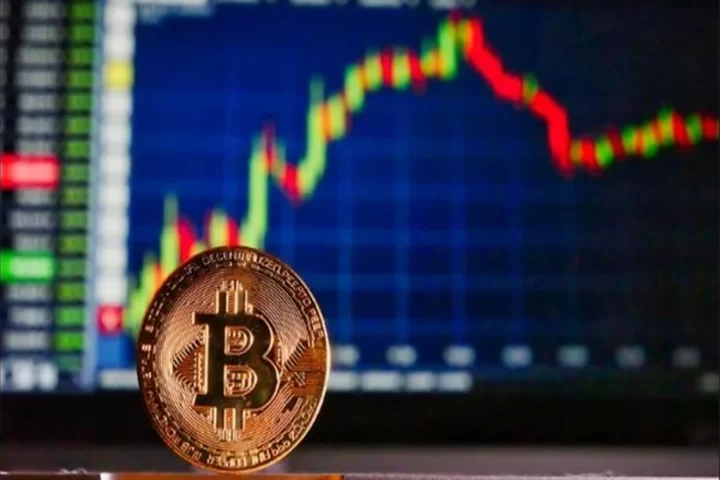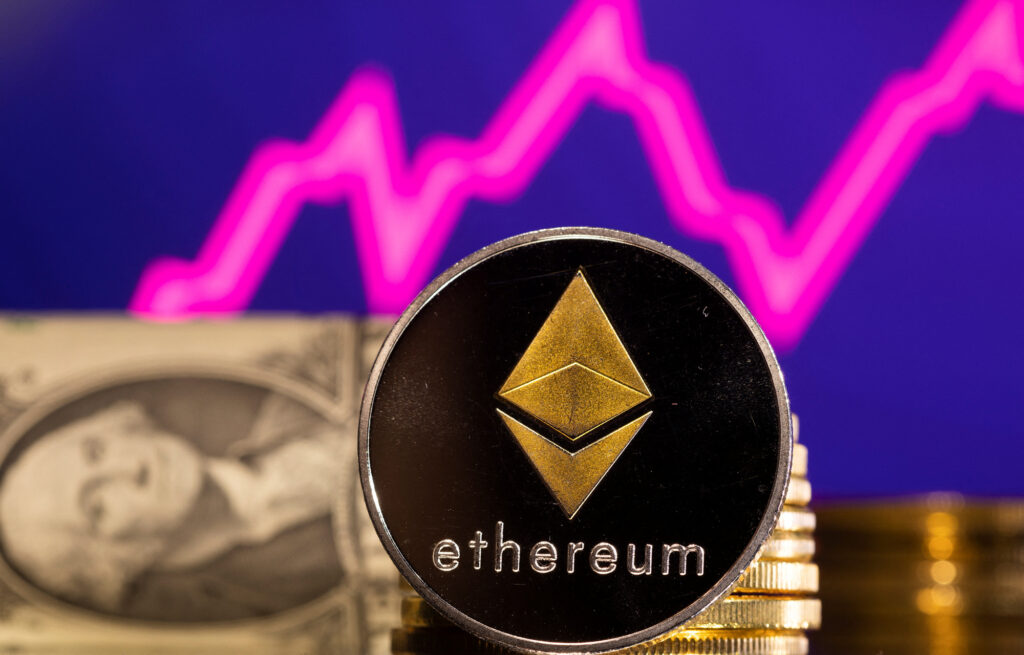The Federal Court of Canada has delivered a significant ruling, deeming an emergency law utilized by the Canadian government to halt the flow of funds and cryptocurrency to protesting truckers as unreasonable and unconstitutional.
On January 23rd, Justice Richard Mosley unequivocally asserted, “There was no national emergency justifying the invocation of the Emergencies Act, and the decision to do so was therefore unreasonable.”
In February 2022, Prime Minister Justin Trudeau’s administration deployed the law for the first time to freeze funds, including cryptocurrencies, donated to truckers who were protesting COVID-19 restrictions. The court found this action to be in violation of the constitution.
These protesters, part of the “Freedom Convoy,” had used their trucks to block streets in Ottawa, Canada’s capital, in opposition to a mandate requiring truck drivers crossing the Canada-United States border to be fully vaccinated against COVID-19.
The government had argued that invoking the Emergencies Act was essential due to the protests being deemed an illegal occupation.
Various organizations, including the Canadian Civil Liberties Association (CCLA) and the Canadian Constitution Foundation, challenged the government’s use of this emergency law to freeze funds, contending that it was unnecessary and unconstitutional.
The CCLA hailed the decision as a “clear and critical precedent for every future government.”
Justice Mosley emphasized that the Emergencies Act should only be invoked as a last resort, stating, “The government cannot invoke the Emergencies Act because it is convenient, or because it may work better than other tools at their disposal or available to the provinces.”
Finance Minister Chrystia Freeland announced the government’s intention to appeal the ruling.
Cryptocurrency played a pivotal role in financing the 2022 trucker protests, with protesters believed to have received millions of dollars.
However, the exact amount raised remained unclear due to the challenges associated with tracking decentralized digital assets.
In response to the freezing of funds, organizers moved their efforts to platforms like Tallycoin, a crowdfunding platform built on the Bitcoin blockchain, and the Christian crowdfunding site GiveSendGo.
These platforms collectively raised substantial sums, including unspecified amounts in cryptocurrency. Nevertheless, Canadian authorities also took measures to freeze bank accounts associated with GiveSendGo donations.
At the time, leaders in the cryptocurrency industry, including Jesse Powell, the founder of Kraken, voiced their condemnation of Canada’s freeze on digital assets.
The cryptocurrency community has brushed off the recent remarks made by JPMorgan CEO Jamie Dimon during an interview on CNBC.
Dimon’s repeated criticisms of Bitcoin, which included debunked claims about its creator, Satoshi Nakamoto, returning to “erase” the cryptocurrency, as well as allegations that Bitcoin “does nothing” and has criminal use cases, have raised suspicions within the crypto community.
Some members of the community speculate that Dimon’s constant negative statements about Bitcoin may be an attempt to manipulate its price.
On Reddit, one user suggested that Dimon’s influence over older investors could be leveraged to drive down the price of Bitcoin, allowing him to accumulate more cryptocurrency at a lower cost.
However, opinions within the community vary. Some believe that Dimon is simply uninformed about Bitcoin, while others think he may be strategically acquiring Bitcoin in anticipation of the upcoming halving event, which many believe will drive up the cryptocurrency’s price.
Dimon’s suggestion that Satoshi Nakamoto could return to “erase” Bitcoin is widely regarded as flawed due to the decentralized nature of the cryptocurrency.
READ MORE: Mt. Gox Trustee Advances Towards Bitcoin Repayments with Identity Verification Confirmation
Nonetheless, a community member proposed the alternative theory that Nakamoto might choose to sell their Bitcoin holdings, which some consider to be a more plausible scenario than Dimon’s idea.
Interestingly, while Dimon continues to criticize cryptocurrencies, it’s worth noting that JPMorgan, the company he leads, is actively involved in the cryptocurrency space.
JPMorgan Securities was named as one of the authorized participants for BlackRock’s recently approved spot Bitcoin exchange-traded funds (ETFs) in the United States.
This move drew criticism, as it appeared contradictory for Dimon to make anti-crypto comments while his company was embracing cryptocurrency-related ventures.
In conclusion, Dimon’s negative remarks about Bitcoin have sparked speculation within the crypto community regarding his motivations.
While some believe he is attempting to manipulate the market, others think he may be positioning himself for potential gains from the upcoming halving event.
Regardless of his statements, the involvement of JPMorgan in cryptocurrency-related initiatives adds an intriguing dimension to the situation.
The ongoing saga of an investor exodus from Grayscale’s Bitcoin Trust (GBTC) has sent shockwaves through the cryptocurrency market, dragging Bitcoin’s price down to below $39,000 for the first time in nearly two months.
Since its transformation into a spot Bitcoin exchange-traded fund (ETF) on January 11, GBTC has experienced massive outflows, totaling more than $3.4 billion.
In response to this, Grayscale has been depositing vast amounts of Bitcoin onto the crypto exchange Coinbase Prime, presumably for sale.
The situation has raised concerns about the extent of the GBTC exodus and its potential consequences.
According to Eric Balchunas, an ETF analyst at Bloomberg, GBTC saw outflows of $515 million on January 23, resulting in a loss of 13% of its outstanding shares.
However, there are indications that the pace of outflows may be slowing down.
In an informal poll conducted on social media platform X (formerly Twitter), Balchunas sought the opinion of the community on when the “mass exodus” from GBTC might end.
Nearly half of the respondents believed it could continue until shares outstanding had diminished by 35–50%, while Balchunas and fellow Bloomberg analyst James Seyffart estimated this might occur at around 25% of outstanding shares.
Currently, Grayscale’s website shows 600.5 million shares outstanding, holding a total of 536,694.9 Bitcoins in trust.
READ MORE: US House Committee Pressures Meta for Transparency on Crypto and Blockchain Plans
In contrast, data from CC15Capital indicates that 82,525 Bitcoins have departed from GBTC since January 10.
The recent wave of outflows is primarily attributed to the defunct cryptocurrency exchange FTX, which reportedly sold two-thirds of its 22.3 million GBTC shares in just three days of trading.
FTX still holds approximately eight million shares, valued at around $281 million, awaiting sale.
Additionally, there is growing concern that Bitcoin from Mt. Gox may soon enter the market.
The Mt. Gox trustee has reportedly contacted creditors to complete identity verification for crypto exchange accounts, which are intended to be used for repaying Bitcoin and Bitcoin Cash. This potential influx of assets could add further downward pressure to Bitcoin’s price.
As of now, Bitcoin is trading at $39,949, showing a slight increase of 0.60% for the day, according to data from CoinMarketCap.
The Crypto Fear & Greed Index hit a 100-day low of 48 on January 24, reflecting the uncertainty and apprehension surrounding the cryptocurrency market.
Bitcoin faced significant pressure as it struggled to hold the $40,000 mark on January 22, coinciding with the Wall Street opening bell.
This downward trend was exacerbated by ongoing BTC sales from Grayscale, a prominent asset manager.
Data from Cointelegraph Markets Pro and TradingView confirmed that Bitstamp witnessed Bitcoin hitting new six-week lows at $40,324.
While BTC’s price had shown relative stability over the weekend, the new week brought continued selling pressure due to the Grayscale Bitcoin Trust (GBTC) reducing its assets under management.
In response to the recent approval of its transition to a spot Bitcoin exchange-traded fund (ETF), GBTC experienced outflows totaling 19,250 BTC, equivalent to $785 million, on January 22, according to live data from Arkham, a crypto intelligence firm.
Some sources even estimated the outflows to be as high as $700 million, as noted by Alex Thorn, head of research at Galaxy, a crypto reconnaissance firm.
Eric Balchunas, an ETF analyst at Bloomberg Intelligence, expressed concerns that these massive sales, conducted as transactions with Coinbase, might be too substantial for other ETF players to absorb.
Despite these challenges, the new spot ETF cohort continued to receive net positive inflows.
GBTC still held over $20 billion in assets, with its share price trading at just a 0.27% discount relative to BTC spot prices as of January 19, according to data from Bitcoin Treasuries.
Bitcoin’s price remained resilient, maintaining support at the $40,000 level despite increasing speculation of further declines.
Many traders started eyeing the mid-$30,000 range as a potential entry point for long positions.
READ MORE: Terraform Labs, Behind Defunct TerraUSD, Files for Bankruptcy Amid Ongoing Legal Battle
The BTC/USDT order book on Binance, a major global exchange, showed growing interest from buyers at $38,500.
Material Indicators, a trading resource, observed that Bitcoin often experienced significant price fluctuations within the first few hours after the US market opened, often linked to ETF flows occurring at the start and end of trading days.
Arthur Hayes, former CEO of BitMEX, shared the sentiment, describing the BTC/USD market as “heavy” and joined others in predicting further price declines.
Despite these challenges, the cryptocurrency market continued to draw attention and interest from investors, with its future trajectory remaining uncertain.
The trustee overseeing the recovery of the hacked cryptocurrency exchange, Mt. Gox, has taken significant steps toward repaying creditors in Bitcoin (BTC) and Bitcoin Cash (BCH).
Recent reports indicate that Mt. Gox creditors have been contacted to confirm their identities and the existence of their exchange accounts, a crucial step in the reimbursement process.
Numerous Mt. Gox creditors have received emails from the trustee, notifying them of the successful completion of identity verification for their crypto exchange accounts.
These accounts will be utilized to facilitate the repayment of BTC and BCH. In a notification posted on Mt. Gox’s insolvency hub on Reddit on January 22nd, it was revealed that a crypto exchange mentioned in a user’s rehabilitation claim had confirmed the ownership of the account with the trustee.
Consequently, the exchange is now poised to accept the user’s subscription to the agency receipt for receiving repayment in BTC or BCH.
However, the email also issued a cautionary note, stating that users might face difficulties in receiving repayment if their accounts are disabled or frozen in the future.
Numerous Reddit users have confirmed receipt of such emails from the Mt. Gox trustee, with the majority of confirmations originating from the Bitstamp exchange.
Some Kraken users also reported receiving confirmation emails, while others have not yet received any communication from the trustee.
Interestingly, certain exchanges involved in the repayment process have informed their users that they will continue serving Mt. Gox-related customers in specific countries, despite their withdrawal from those jurisdictions.
Bitstamp, for instance, which ceased operations in Canada on January 4, 2024, announced that it would continue servicing local accounts engaged in the Mt. Gox settlement.
However, these accounts will have limited functionality, restricted to withdrawals only, with deposits and trading no longer available.
These developments coincide with the trustee’s progress in facilitating bank account repayments. Reports of the first Mt. Gox repayments surfaced in late December 2023, and some creditors even received double payments during this phase.
Founded in 2010, Mt. Gox was once the world’s largest Bitcoin exchange, handling approximately 70% of all BTC transactions.
However, it suffered a massive security breach in 2014, resulting in the loss of 850,000 BTC and making it one of the largest crypto bankruptcies in history.
Mt. Gox is now on track to repay its creditors a total of 142,000 Bitcoin and 143,000 Bitcoin Cash, along with 69 billion Japanese yen (approximately $510 million) by October 2024.
The fee war in the Bitcoin exchange-traded fund (ETF) arena has now crossed the Atlantic to Europe. This development follows the recent approval by the United States Securities and Exchange Commission (SEC) of Bitcoin ETFs in the United States, marking a significant shift in the financial landscape.
In the lead-up to the SEC’s approval on January 10th, many applicants in the U.S. continually adjusted their S-1 filings to reduce their ETF fees. Now, a similar trend is emerging in Europe among listed exchange-traded products (ETPs).
Two prominent asset management firms, Invesco and WisdomTree, have taken a bold step by slashing fees on their European-listed ETPs by over 60%.
Invesco’s $137 million Physical Bitcoin ETP will see its fee drop from 0.99% to a mere 0.39%, while WisdomTree’s $325 million Physical Bitcoin ETP will see its cost decrease from 0.95% to 0.35%.
It’s worth noting that in Europe, digital asset exchange-traded products are structured as exchange-traded notes (ETNs), a distinction from funds.
ETN investors hold debt securities, while ETF shareholders have a stake in the fund’s underlying assets.
READ MORE: Terraform Labs, Behind Defunct TerraUSD, Files for Bankruptcy Amid Ongoing Legal Battle
The significant fee reductions can be attributed to increased competition and the proliferation of multiple ETFs in the U.S., a leading global financial market.
Previously, U.S.-based investors had to look to Canadian and European-based ETPs for investment opportunities.
However, with the SEC’s green light for 11 spot Bitcoin ETFs in the U.S., the demand for European ETPs from U.S. investors has markedly diminished.
Gary Buxton, Invesco’s Head of ETFs for Europe, explained in an interview with the Financial Times that the multitude of ETFs in the U.S. adjusted their fees to establish a “new equilibrium between supply and demand.” This led to considerably lower prices compared to existing ETPs in Europe.
U.S.-based Bitcoin ETFs have an advantage over their European counterparts in terms of liquidity and accessibility.
They are available on a single exchange platform, making them more convenient for European investors.
The recently launched spot Bitcoin ETFs in the U.S. have witnessed massive trading volumes from day one and continue to trade billions of dollars in daily volume, further strengthening their appeal to investors on both sides of the Atlantic.
This fee war signals a shifting landscape in the world of digital asset investment, with investors benefiting from reduced costs and increased options as competition heats up in both the U.S. and Europe.
Bitcoin approached the $42,000 mark as the week closed on January 21, but it was far from a stellar week for the cryptocurrency bulls.
Data from Cointelegraph Markets Pro and TradingView indicated that Bitcoin’s price managed to stabilize above the $41,000 level during the weekend, although it had dipped to $40,270 on Bitstamp earlier in the week, marking its lowest point since December 11.
The cryptocurrency landscape seemed less optimistic for those hoping for new all-time highs, as market participants anxiously awaited the weekly close and the resumption of Wall Street trading.
Popular trader and analyst Rekt Capital warned that Bitcoin had dropped below the Weekly Range Low after encountering new resistance, and a weekly close below this level could initiate a bearish trend.
Crypto Tony, another trader, expressed the possibility of Bitcoin dropping below $40,000, possibly before the block subsidy halving scheduled for April.
Additionally, Joe McCann, founder of the crypto fund Asymmetric, highlighted the dwindling trading volume in Bitcoin since the launch of exchange-traded funds (ETFs), which had been anticipated.
The spotlight remained on the United States’ spot Bitcoin ETFs, which had grown their assets under management to nearly $4 billion since their introduction on January 11.
READ MORE: Sam Altman’s Ambitious Plans to Establish Global Semiconductor Manufacturing Facilities
These ETFs helped mitigate the impact of selling from the Grayscale Bitcoin Trust (GBTC), which had recently transitioned into an ETF. GBTC had experienced outflows due to high maintenance fees and investors seeking to cash out at par value, as previously GBTC shares had traded at a substantial discount compared to BTC/USD.
Trading firm QCP Capital noted that GBTC had witnessed outflows of $1.17 billion since its conversion into an ETF and emphasized the significance of monitoring these outflows moving forward.
The conversion into an ETF offered GBTC holders a long-awaited opportunity to exit at par value, but the extent of remaining outflows from GBTC’s current $25.4 billion assets under management remained uncertain.
Looking ahead, QCP Capital pointed out that the next major crypto events to watch were the Bitcoin halving in mid-April and the potential approval of Ethereum (ETH) spot ETFs starting in May.
Additionally, macroeconomic events were expected to influence the direction of the cryptocurrency market in the interim.
In the inaugural week of trading for United States spot Bitcoin exchange-traded funds (ETFs), an astonishing influx of capital surged into these new investment vehicles.
However, amidst their remarkable popularity, voices from the crypto world are raising concerns, contending that these ETFs might contradict the core principles upon which cryptocurrencies were founded.
On January 10, the U.S. Securities and Exchange Commission granted approval to multiple spot Bitcoin ETFs, marking a historic milestone.
Subsequently, on January 11, these ETFs commenced trading, and the demand for them became glaringly evident, with trading volumes surging to $10 billion within the first week.
Furthermore, the Bitcoin ETF market witnessed an impressive influx of over $782 million in just the initial two days of trading.
Nonetheless, despite their undeniable popularity, some crypto executives are sounding alarms, suggesting that ETFs could result in increased centralization within the crypto industry and may eventually become obsolete.
Andy Bromberg, the CEO of wallet developer Eco, expressed concerns about the potential for traditional financial institutions to gain excessive influence through Bitcoin ETFs.
He argued that when investors buy into these ETFs, they essentially provide Wall Street with funds to purchase Bitcoin, while they themselves only own a share on paper.
He lamented that this deviates from the original ideals of Bitcoin, emphasizing that it may lead to Wall Street institutions controlling a significant portion of the circulating Bitcoin supply.
Bromberg criticized ETFs as a stripped-down version of Bitcoin, removing the technology’s intrinsic features and focusing solely on its price.
However, he did acknowledge the importance of ETF approval, as it allows Americans to express their opinions on Bitcoin within the financial markets.
READ MORE: U.S. Regulators Investigate Debiex Exchange for Alleged Romance-Driven Crypto Swindle
Still, he stressed that the crypto community faces a critical test in guiding new investors toward self-custodying their assets to prevent Wall Street dominance.
Bromberg suggested that developers should create user-friendly products that provide asset custody while maintaining the core promises of crypto.
Lucas Henning, CTO for the Suku wallet development team, shared Bromberg’s reservations about Bitcoin ETFs.
He argued that ETFs may not sustain public interest for long, particularly as the SEC’s approval of other cryptocurrencies for ETFs remains uncertain.
He highlighted that most crypto yields might not be accessible through traditional brokerage accounts.
Henning also pointed out the increasing ease of self-custodying crypto assets, particularly within the Ethereum ecosystem, due to developments like Ethereum Improvement Proposal 7212.
This proposal would allow on-chain signatures using facial recognition technology, simplifying the process for users to sign transactions securely, reducing the need for ETFs to manage their assets.
In conclusion, while Bitcoin ETFs have garnered significant attention and investment, there are concerns within the crypto community that they might compromise the core principles of decentralization.
Some experts believe that as self-custodying options improve, the appeal of ETFs may wane, ultimately shaping the future of crypto investment.
Bitcoin struggled to maintain its position near monthly lows as it approached the Wall Street opening on January 20th, while Ether encountered significant resistance in its upward journey.
Bitcoin faced substantial sell-side pressure, with its price hovering around $40,600 overnight, marking its lowest point since December 18th. Bulls repeatedly failed to regain lost ground, creating a tense atmosphere in the market.
Michaël van de Poppe, the founder and CEO of MN Trading, suggested that a potential price floor for Bitcoin might be in the mid-$30,000 range, although he believed further testing of lower levels might occur before a reversal.
He expressed personal interest in accumulating Bitcoin between $36,000 and $40,000.
Rekt Capital, a popular trader and analyst, supported the idea that Bitcoin was following patterns typically observed before block subsidy halvings.
This pattern could indicate a retreat in the coming month before the halving event scheduled for April.
Additionally, a significant number of Bitcoin sales occurred during the recent dip, with approximately 59,000 BTC moving on-chain for the first time in three to six months.
These coins were originally acquired at an average cost of $26,000, resulting in a realized profit of nearly $900 million.
READ MORE: ProShares Sets Sights on Bitcoin ETFs with Indirect Exposure Amidst Growing Market Demand
Earlier research had attributed the drop from $49,000 the previous week to large-scale whale selling.
In the world of altcoins, attention shifted to ETH/BTC, which had been on a downward trendline for an extended period.
Ether had made notable gains against Bitcoin in the past week, surpassing the 0.06 BTC mark before consolidating at that level, its highest since April 2022.
This consolidation was occurring at a resistance trendline and above the 200-day moving average cloud, according to Caleb Franzen, a senior analyst at Cubic Analytics.
Franzen’s analysis referenced data indicating that ETH/USD was likely to outperform BTC/USD in the future.
In summary, Bitcoin faced significant sell-side pressure and hovered near monthly lows, with experts suggesting potential price floors.
Meanwhile, Ether encountered resistance against Bitcoin and consolidated near a crucial resistance trendline, indicating potential strength in the ETH/USD pair going forward.
Bitcoin traders are facing a challenging time as the recent sell-off in the market has left them disappointed, with newly launched spot Bitcoin exchange-traded funds (ETFs) failing to deliver the anticipated price surge.
Adding to their concerns, the steady outflows from the Grayscale Bitcoin Trust (GBTC) have been putting downward pressure on the Bitcoin price.
To make matters more complex, there is a strong resurgence of the U.S. dollar, compounding the challenges for market participants.
The U.S. Dollar Index (DXY), a gauge of the dollar’s performance against major foreign currencies, has shown a remarkable recovery, surging by 2.71% from its low of 100.617 on December 27th.
This resurgence has been fueled by positive economic data from the United States, including robust retail sales, an upbeat Philly Fed Manufacturing Index, and a decline in weekly initial jobless claims.
Consequently, the DXY has reached new highs in the range of 103.65 to 103.70 in 2024.
December 2023 retail sales, as reported by the U.S. Census Bureau, exceeded expectations with a growth rate of 0.6%, surpassing the anticipated 0.4% and the previous period’s 0.3%.
Moreover, the dollar’s recovery can be attributed to an increase in U.S. yields, driven by diminishing expectations of an imminent interest rate cut by the Federal Reserve.
From a technical perspective, the U.S. Dollar Index appears poised for a further ascent, potentially exceeding 1.12% due to the formation of a V-shaped recovery pattern.
If the DXY manages to breach its neckline at 104.56, the likelihood of an extended recovery towards 107 in the coming months is on the horizon.
Meanwhile, the massive outflows from GBTC have significantly impacted the Bitcoin price since the launch of spot Bitcoin ETFs on January 11th.
Grayscale has liquidated a substantial portion of its Bitcoin holdings within GBTC, with nearly 38,000 BTC leaving since the conversion to a spot ETF on that date.
On January 12th alone, there were outflows totaling $484 million from Grayscale, as GBTC holders exercised open redemption options.
Notably, despite the approval of spot Bitcoin ETFs, economist Peter Schiff believes that the Bitcoin price has not surged due to the outflows from Grayscale’s GBTC product.
He argues that while total inflows were substantial, their impact on the overall BTC market has been limited.
In terms of price analysis, independent market analyst Ali suggests that Bitcoin has been moving within an ascending parallel channel since late 2022.
He attributes the current correction to a rejection from the upper boundary of the channel at $48,000 and predicts a retracement to the lower boundary at $34,000.
Nevertheless, market intelligence firm Santimet remains optimistic about the long-term impact of spot Bitcoin ETFs.
READ MORE: Netherlands Allocates €204.5 Million to Boost AI Investment and Competitiveness
They acknowledge that the approval news may have contributed to a localized crypto market peak, as many experts believed that the approvals were already factored into market prices at the time of the announcements.









